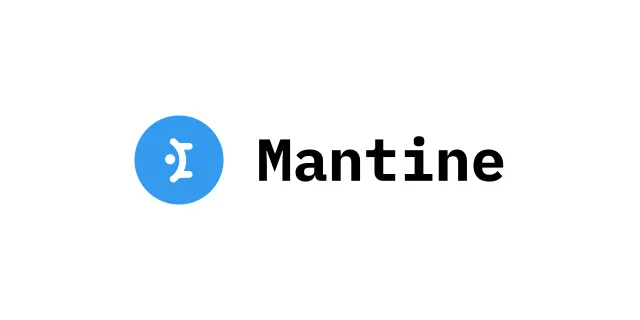Getting started with Mantine and why you should use it.
 Ayush Bajpai
Ayush Bajpai
The Mantine Library: Simplicity and Power for React Forms
Mantine is a popular UI library for React that helps developers create complex, scalable, and flexible forms in their applications. It is built on modern web technologies and is designed for ease of use and customization. This blog post will provide an overview of the Mantine Library and include code snippets and examples.
What is the Mantine Library?
The Mantine Library is a form management library for React that provides a set of components and utilities for building and managing forms in a declarative and intuitive way. It allows developers to create complex and dynamic forms with minimal code, making it a powerful tool for building user interfaces.
One of the key features of Mantine is its focus on simplicity and ease of use. The library provides a wide range of pre-built components that can be easily integrated into any React project, allowing developers to quickly build sophisticated user interfaces without having to spend time writing complex code.
Why use the Mantine Library?
The Mantine Library offers a number of benefits for developers working with forms in React. Some of the key advantages include:
Simplicity: The Mantine Library provides a straightforward and intuitive API for building and managing forms, making it easy to get started even for developers with limited experience with React.
Flexibility: The Mantine Library allows developers to customize their forms in a variety of ways, including using custom components, validation rules, and field-level behaviors.
Scalability: The Mantine Library is designed to support large and complex forms, allowing developers to build scalable and maintainable applications.
Performance: The Mantine Library uses efficient algorithms and optimization techniques to ensure that forms perform well even in large and complex applications.
Getting Started with the Mantine Library
To use the Mantine Library in your React application, you'll first need to install it using npm or yarn:
npm install mantine
Then, you can import the components you want to use in your project:
import { Button, Card, Input } from 'mantine';
Once you've imported the components you need, you can use them in your React components as you would any other React component. For example, here's how you might use the Mantine Button component:
function MyButton() {
return <Button>Click me!</Button>;
}
As you can see, using Mantine components is straightforward and similar to using other React components.
Mantine also comes with a range of built-in themes that can be easily applied to your components to give them a consistent look and feel. For example, you can use the ThemeProvider component to wrap your entire application and apply a theme to all of your Mantine components:
import { ThemeProvider } from 'mantine';
function App() {
return (
<ThemeProvider theme="dark">
{/* your app components here */}
</ThemeProvider>
);
}
Mantine also makes it easy to customize and extend the components to fit the specific needs of your project. Each component is built using modular and reusable building blocks called "tokens", which allow you to easily adjust colors, spacing, typography, and other styles.
Given below are some of the few more examples for the mantine library:
import React from 'react';
const Mantine = (props) => {
return (
<div>
<h1>Mantine</h1>
<p>Mantine is a large, flying Pokémon that resembles a manta ray. It is blue and has dark, wing-like markings on its sides. It is capable of flying for long periods of time without rest, and uses its large wings to glide on the winds. In the wild, Mantine are often seen swimming in large schools near the surface of the water.</p>
</div>
);
}
export default Mantine;
This code defines a functional React component called Mantine which returns a div element containing a heading and a paragraph of text describing the Pokémon. The component can be used in other parts of a React app by importing it and rendering it. For example:
import React from 'react';
import Mantine from './Mantine';
const App = () => {
return (
<div>
<Mantine />
</div>
);
}
export default App;
Here is an example of a hero section with an image using the Mantine library in React:
import React from 'react';
import Mantine from 'mantine'; // Import the Mantine library
const Hero = () => {
return (
<Mantine.Hero image="https://cdn.bulbagarden.net/upload/thumb/8/8d/226Mantine.png/1200px-226Mantine.png">
<Mantine.Heading>Mantine</Mantine.Heading>
<Mantine.Text>A large, flying Pokémon that resembles a manta ray</Mantine.Text>
</Mantine.Hero>
);
}
export default Hero;
This code defines a functional React component called Hero which uses the Mantine.Hero, Mantine.Heading, and Mantine.Text components from the Mantine library to create a hero section with an image and text. The image prop is passed to the Mantine.Hero component to specify the image to use, and the Mantine.Heading and Mantine.Text components are used to add a heading and paragraph of text to the hero section.
The Hero component can be used in other parts of a React app by importing it and rendering it. For example:
import React from 'react';
import Hero from './Hero';
const App = () => {
return (
<div>
<Hero />
</div>
);
}
export default App;
This code defines another functional React component called App which renders the Hero component within a div element. The App component can be rendered to the DOM using React's render method.
Overall, Mantine is a powerful and easy-to-use UI library for React that allows developers to quickly build beautiful and responsive user interfaces. With its focus on simplicity, modularity, and customization, it is an excellent choice for any React project.
You can find the link to the mantine library here.
Subscribe to my newsletter
Read articles from Ayush Bajpai directly inside your inbox. Subscribe to the newsletter, and don't miss out.
Written by
